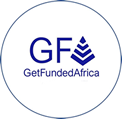How To Build a Product Roadmap

A product roadmap is a high-level visual overview that effectively communicates the why and what of what you’re doing while outlining the goal and trajectory of your product offering over time. The roadmap also acts as a blueprint for carrying out the product strategy and as a strategic document that defines strategy.
Creating a successful product roadmap requires time, patience, and clear communication to ensure that your team’s goals are appropriately reflected to internal stakeholders, external stakeholders, and future consumers.
Why Are Product Roadmaps Important?
A product roadmap helps in clearly articulating the product vision and strategy, making it easier to secure executive buy-in while also ensuring that everyone is working toward a common goal. It is also helpful to;
- Provide your team directions.
- Discern that all teams are on the same page in terms of product priorities.
- Allow for feedback and agreement so that all team members and stakeholders are on board with the process.
- Evaluate all aspects of the product journey to identify any gaps.
Steps to Take When Building an Effective Roadmap
- Share organizational and product goals with your team. Start by ensuring that you have a thorough knowledge of the company’s goals and consumer expectations.
- Develop a strategy with your internal team. Facilitate several meetings with your team to determine how your product can help the organization reach its strategic goals.
- Create an initial draft that reflects your team’s approach to accomplishing organizational goals. Maintain the appropriate level of abstraction in your roadmap by avoiding getting too specific about specific features that are or are not being addressed.
- Ask for feedback from team members. Share it with your team and sit on it for a few days to let everyone process. Once that period has passed, ask for feedback from the team one more time and adjust as needed.
- Present the roadmap to stakeholders. You should be confident in presenting since your team has aligned the roadmap with the organization and product goals, which should impress your stakeholders.
Read Also: How To Become Investment Ready
What Product Roadmap Contents Should Be Included?
- Product Vision/Theme.
This is a high-level objective for the product, generally based on a related collection of features or stories, that can enable your company to get started on the path to developing a specific product strategy. It is the vision of what is desired as well as the potential for a great product.
This initial vision does not have to be the definitive one, but it does begin the process of developing a product roadmap, enabling additional planning to proceed.
- Strategy.
This is a product execution plan that details what your organization will do to meet the vision. Explain how this product will benefit the business and fit into the existing vision, educating internal and external stakeholders about the project’s ultimate business goal.
Once these elements are in place, the roadmap is used to keep the plan moving forward and consistent.
- Features & Requirements.
You need to gather information in order to outline your needs. Communicate with your sales and customer service teams to understand how your customers feel about current goods, what they want, and any feature requests. This helps you determine which features should be prioritized in future product releases. Reach out to user experts to engage with consumers who currently use your products.
Adding features to your roadmap informs stakeholders about which features are prioritized for the current version and which may be introduced later.
- Timelines.
This is the approach that explains how your company will ensure the product’s vision is accomplished, as well as the dates and timeframes for completing a specific milestone or feature. Set priorities and precise goals for this timetable.
It must be broad enough to allow for creativity and flexibility, but there must be certain general timeframes and goals to meet. Plan initiatives on quarterly or monthly timelines.
- Status Markers.
These are essential for tracking job progress and keeping everyone up-to-date on timelines. While you may not have specific dates, understanding where the milestones are to track the progress of the task is critical to keeping things going. Markers can be adjusted as required but displaying where they are set helps individuals check timelines as needed.
- Metrics.
This will help with the data-driven measurement goal. Determine that all teams are aware of the metrics and that everyone is measuring things in the same way. Everyone must communicate in the same language so that there is no misunderstanding about what is being measured.
About GetFundedAfrica
GetFundedAfrica is building Africa’s largest tech-enabled marketplace which connects African founders with global mentors, coaches, corporates, investors and government. Whether you want to raise funds ranging from $100k to $50m or you simply want to grow your business, sign up for free at www.getfundedafrica.com




